Expand Search Form Southwestern Metal Yard Art Agave Cactus Small Decor Landscape Rusty Steel
Using stock tanks in the garden
December 12, 2008
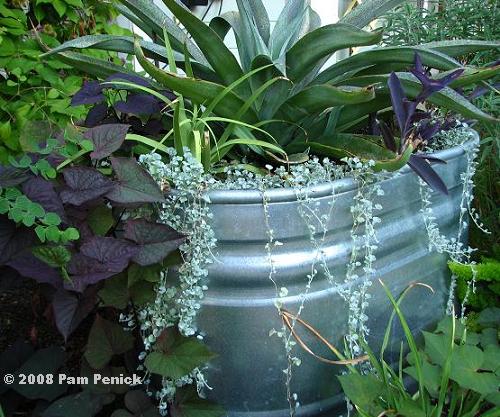
Lately an unassuming container made for ranch life has been actualization in creative and stylish urban gardens: the stock tank, or cattle trough. Information technology's Old Texas meets New Texas, and boy howdy, it works.
Warehoused amid poultry feed, hog fencing, and deer corn at subcontract-supply stores similar Callahan's, stock tanks of all sizes can hands be converted into planters that smooth in the landscape. Literally smoothen—they're silver. Freeze-proof and rust-resistant, these sturdy, galvanized-steel containers brand attractive, affordable substitutes for perishable terracotta and cast-iron vessels.
Their simple, sleek lines complement many styles of gardens, from cottage to rustic to modern minimalist. They mix particularly well with the rusty steel edging, corrugated siding, concrete flooring, and recycled-drinking glass mulch that define the Texas contemporary look, increasingly pop among local builders and garden designers.
But information technology'southward not just a Texas wait. If garden photos in national magazines are whatever indication, stock tanks are enjoying artistic reuse all over the country. Even the New York Times recently featured a San Francisco rooftop vegetable garden entirely planted in a grid of stock tanks—an idea easily adjusted by Austin gardeners hampered past thin, rocky soil. Rather than jack-hammering through rock or edifice raised beds, brand a kitchen garden out of stock tanks by setting them in the k and filling them with soil. As an extra benefit, their height makes weeding and harvesting less of a strain on the back.
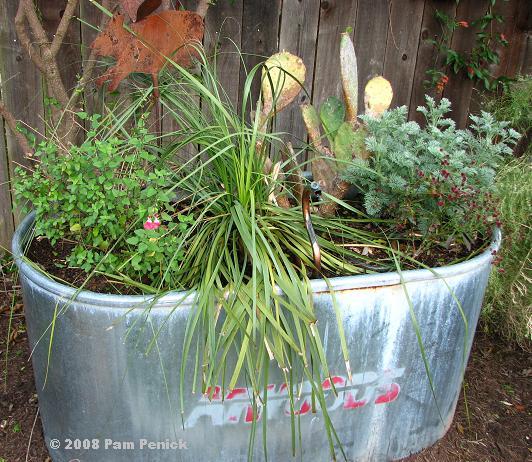
Stock tanks are ideally suited for ornamental plantings too. Hot summer days can cook plants in minor pots, particularly porous terracotta, and require watering one time or even twice a day. A bigger container needs less-frequent watering. Filled with tough, drought-tolerant, deer-resistant plants similar salvia, nolina, opuntia, and artemisia, for case, an established cattle-trough planter won't demand watering more than than one time a week in summer. To let drainage, be sure to remove the metal plug and add a few extra drainage holes with a metal drill flake at the base of the tank before planting.
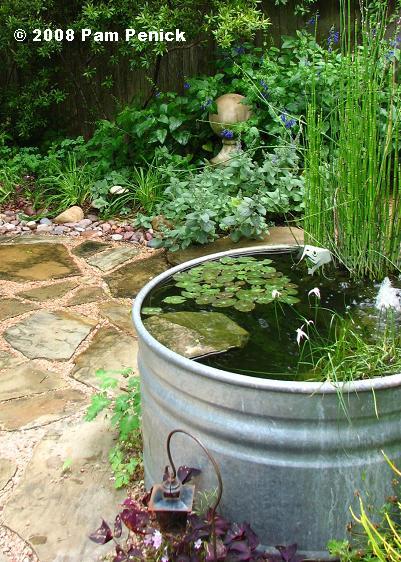
Galvanized stock tanks also make easy water features, resisting rust and holding water for many years. Before filling, rinse out any dust or dirt, and deeply tighten the drain plug at the base to prevent leaks. Take the time to spread a 4-inch base of decomposed granite or coarse builder's sand in social club to make the tank perfectly level; an uneven tank, when filled, will be obvious because of the off-kilter water line. One time the base of operations is level, roll the tank into place and fill information technology up from the hose. Let it sit for a few days and then that the chlorine in the water evaporates and the water temperature equalizes with the air temperature.
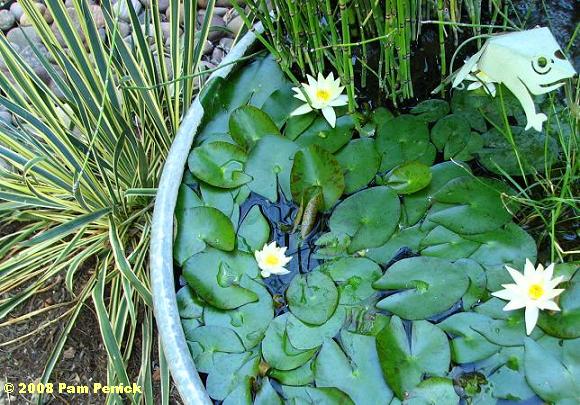
Now comes the fun function—choosing pond plants. If your tank is at least ii anxiety deep and situated in full dominicus, you can grow a water lily; a dwarf variety like 'Helvola' works all-time unless your tank is very big. Exist certain to add some submerged plants like anacharis to help continue the water clear of algae. A couple of goldfish or gambusia fish add color and life, plus they eat mosquito larvae, preventing your tank from condign a breeding ground (or you can use mosquito dunks). Add a bubbler pump if you wish, and you've got a beautiful container pond with no digging required.
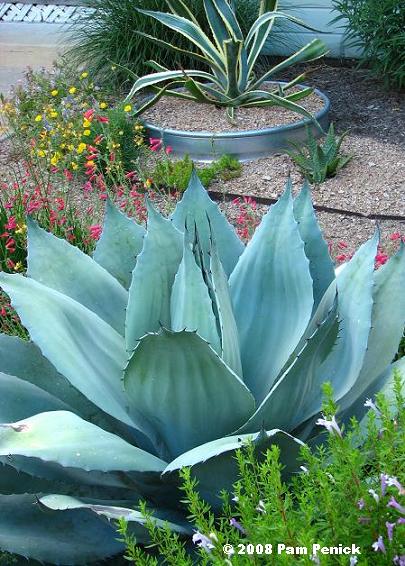
Other ideas abound. Sink a stock tank into the ground to create a modest reflecting pool or to contain bamboo or other "running" plants. Utilise a shallow tank to elevate and showcase a dramatic found like an agave.
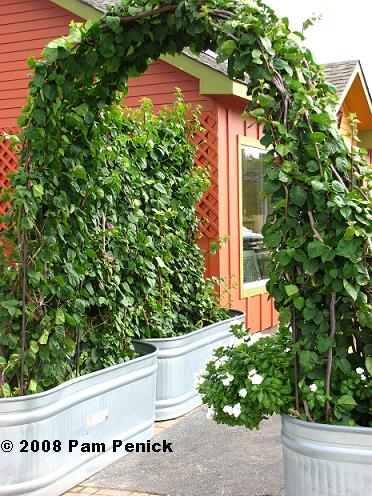
Create a living screen to hide the garbage bins past inserting a trellis into a long, oval tank and planting an evergreen vine on it. Or brand a welcoming entry by placing a tank on either side of a pathway, connecting the ii containers with an biconvex metal trellis, and growing a climbing vine on each side. A few more perennials and a potato vine or silver ponyfoot spilling over the edge of the tanks completes the look.
Gardeners accept long appropriated old stone troughs from Europe as planters, recognizing the beauty of honest, workaday containers. Now the humble ranch trough of the American southwest has found its identify in the garden likewise.
Institute them until the cows come home.
This commodity first appeared in the Austin American-Statesman, Baronial 16, 2008. —Pam
All material © 2006-2008 past Pam Penick for Digging. Unauthorized reproduction prohibited.
Source: https://www.penick.net/digging/?p=1610
Enviar um comentário for "Expand Search Form Southwestern Metal Yard Art Agave Cactus Small Decor Landscape Rusty Steel"